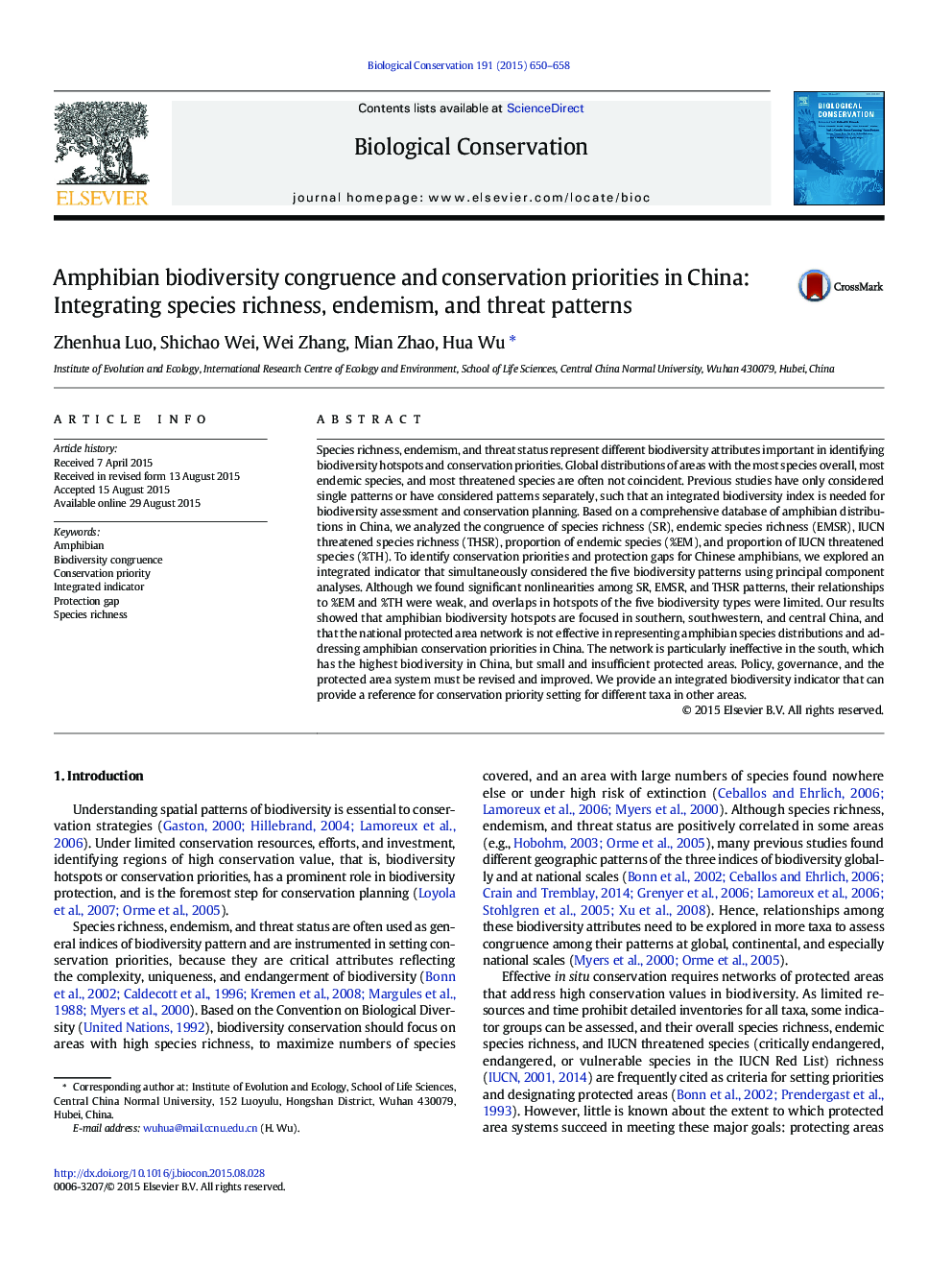| کد مقاله | کد نشریه | سال انتشار | مقاله انگلیسی | نسخه تمام متن |
|---|---|---|---|---|
| 6299065 | 1617910 | 2015 | 9 صفحه PDF | دانلود رایگان |
عنوان انگلیسی مقاله ISI
Amphibian biodiversity congruence and conservation priorities in China: Integrating species richness, endemism, and threat patterns
ترجمه فارسی عنوان
سازگاری تنوع زیستی دوزیستان و اولویت های حفاظت در چین: ادغام غنای گونه ای، اندمیزی و الگوهای تهدید
دانلود مقاله + سفارش ترجمه
دانلود مقاله ISI انگلیسی
رایگان برای ایرانیان
کلمات کلیدی
دوزیستان، همبستگی تنوع زیستی، اولویت حفاظت، شاخص یکپارچه، فاصله حفاظت، غنای گونه،
موضوعات مرتبط
علوم زیستی و بیوفناوری
علوم کشاورزی و بیولوژیک
بوم شناسی، تکامل، رفتار و سامانه شناسی
چکیده انگلیسی
Species richness, endemism, and threat status represent different biodiversity attributes important in identifying biodiversity hotspots and conservation priorities. Global distributions of areas with the most species overall, most endemic species, and most threatened species are often not coincident. Previous studies have only considered single patterns or have considered patterns separately, such that an integrated biodiversity index is needed for biodiversity assessment and conservation planning. Based on a comprehensive database of amphibian distributions in China, we analyzed the congruence of species richness (SR), endemic species richness (EMSR), IUCN threatened species richness (THSR), proportion of endemic species (%EM), and proportion of IUCN threatened species (%TH). To identify conservation priorities and protection gaps for Chinese amphibians, we explored an integrated indicator that simultaneously considered the five biodiversity patterns using principal component analyses. Although we found significant nonlinearities among SR, EMSR, and THSR patterns, their relationships to %EM and %TH were weak, and overlaps in hotspots of the five biodiversity types were limited. Our results showed that amphibian biodiversity hotspots are focused in southern, southwestern, and central China, and that the national protected area network is not effective in representing amphibian species distributions and addressing amphibian conservation priorities in China. The network is particularly ineffective in the south, which has the highest biodiversity in China, but small and insufficient protected areas. Policy, governance, and the protected area system must be revised and improved. We provide an integrated biodiversity indicator that can provide a reference for conservation priority setting for different taxa in other areas.
ناشر
Database: Elsevier - ScienceDirect (ساینس دایرکت)
Journal: Biological Conservation - Volume 191, November 2015, Pages 650-658
Journal: Biological Conservation - Volume 191, November 2015, Pages 650-658
نویسندگان
Zhenhua Luo, Shichao Wei, Wei Zhang, Mian Zhao, Hua Wu,
